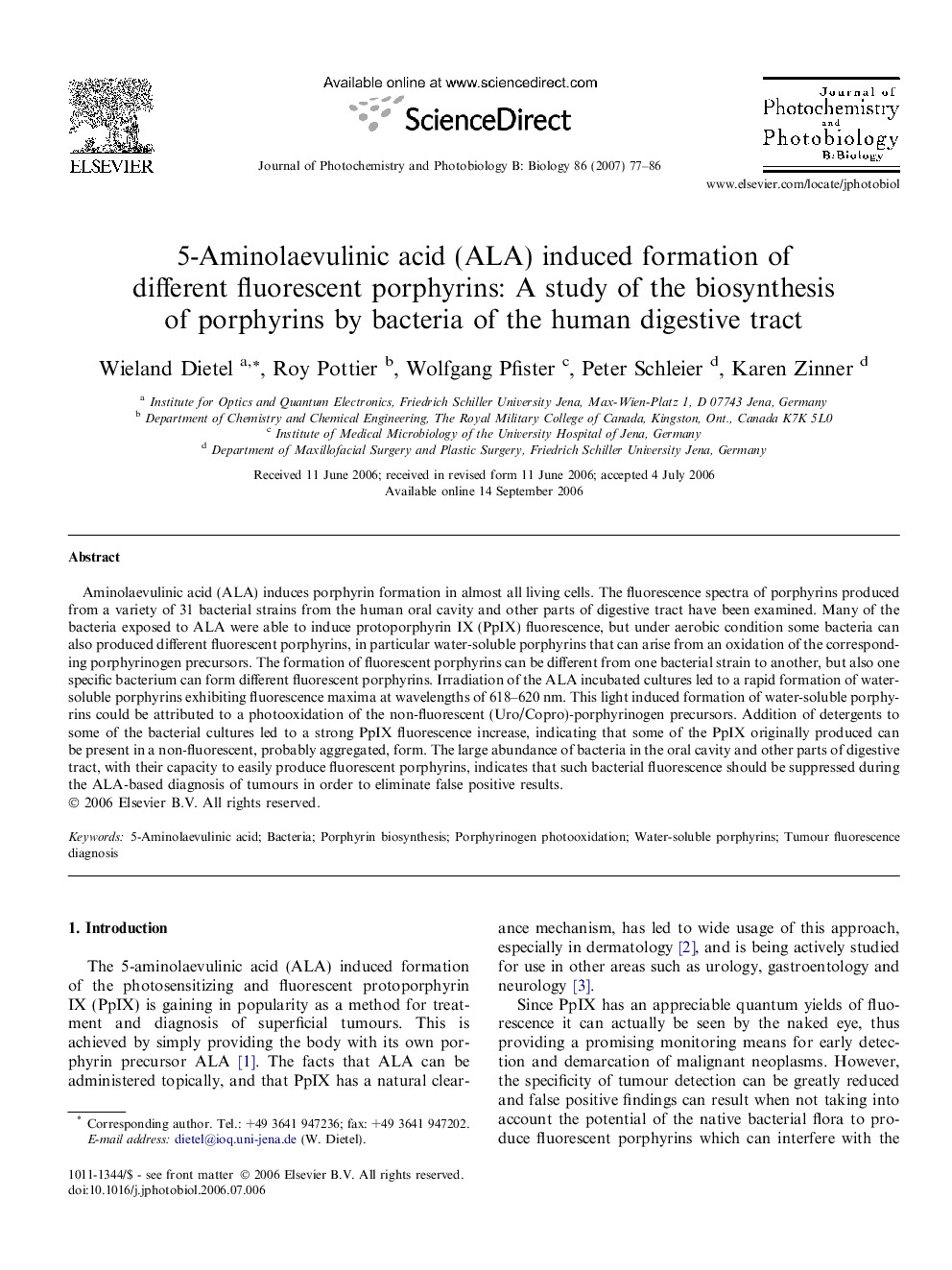| Article ID | Journal | Published Year | Pages | File Type |
|---|---|---|---|---|
| 31205 | Journal of Photochemistry and Photobiology B: Biology | 2007 | 10 Pages |
Aminolaevulinic acid (ALA) induces porphyrin formation in almost all living cells. The fluorescence spectra of porphyrins produced from a variety of 31 bacterial strains from the human oral cavity and other parts of digestive tract have been examined. Many of the bacteria exposed to ALA were able to induce protoporphyrin IX (PpIX) fluorescence, but under aerobic condition some bacteria can also produced different fluorescent porphyrins, in particular water-soluble porphyrins that can arise from an oxidation of the corresponding porphyrinogen precursors. The formation of fluorescent porphyrins can be different from one bacterial strain to another, but also one specific bacterium can form different fluorescent porphyrins. Irradiation of the ALA incubated cultures led to a rapid formation of water-soluble porphyrins exhibiting fluorescence maxima at wavelengths of 618–620 nm. This light induced formation of water-soluble porphyrins could be attributed to a photooxidation of the non-fluorescent (Uro/Copro)-porphyrinogen precursors. Addition of detergents to some of the bacterial cultures led to a strong PpIX fluorescence increase, indicating that some of the PpIX originally produced can be present in a non-fluorescent, probably aggregated, form. The large abundance of bacteria in the oral cavity and other parts of digestive tract, with their capacity to easily produce fluorescent porphyrins, indicates that such bacterial fluorescence should be suppressed during the ALA-based diagnosis of tumours in order to eliminate false positive results.
